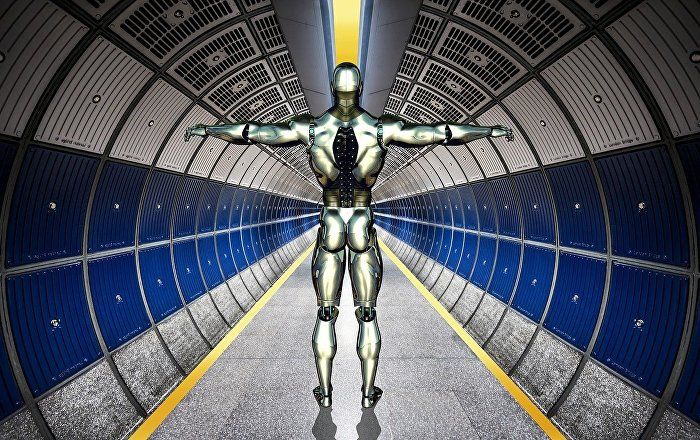Control this humanoid robot in VR.
Get the latest international news and world events from around the world.
Virtual Reality Waterslide
This VR waterslide looks amazing.
Robot VR Experience
Robots help extend VR into the real-world.

Is Artificial Intelligence Dangerous? 6 AI Risks Everyone Should Know About
Misalignment between our goals and the machine’s
Part of what humans value in AI-powered machines is their efficiency and effectiveness. But, if we aren’t clear with the goals we set for AI machines, it could be dangerous if a machine isn’t armed with the same goals we have. For example, a command to “Get me to the airport as quickly as possible” might have dire consequences. Without specifying that the rules of the road must be respected because we value human life, a machine could quite effectively accomplish its goal of getting you to the airport as quickly as possible and do literally what you asked, but leave behind a trail of accidents.
Discrimination.


Scientists Just Proved A Fundamental Quantum Physics Problem is Unsolvable
Scientists have proven for the very first time that one of the most fundamental problems of particle and quantum physics is mathematically unsolvable.
In short, they show that regardless of how no matter how perfectly we can mathematically describe a material on the microscopic level, we are never going to be able to predict its macroscopic behavior. Never.
The work was published in Nature.
New VR simulation lets you explore supermassive black hole
For the first ever time, scientists have created a virtual reality (VR) simulation of Sagittarius A*- the black hole at the center of our galaxy. The simulation allows helps viewers to better visualize the phenomenon and study the black holes as well.
With the aim of creating a VR simulation of Sagittarius A*, scientists at Radboud University, The Netherlands and Goethe University, Germany come together and used an astrophysical model of Sagittarius A*. Through this model, they were able to capture an image series that then put together to create a 360-degree virtual reality simulation of the black hole.
The simulation can be seen using VR consoles. The most fascinating thing about this simulation is, it created one of the most realistic views of the direct surroundings of the black hole. Moreover, it is expected to help scientists to study the behavior of the black hole.
Lockheed Martin begins building ‘son of Concorde’ supersonic plane
It can fly from London to New York in THREE HOURS 🤯.

Star Trek–like Tech Seals Wounds With a Laser
On Star Trek: The Next Generation, Commander Riker had an impressive ability to receive head wounds. Luckily for him, Dr. Crusher could whip out the “dermal regenerator,” a handheld sci-fi tool that healed skin wounds with a colorful laser.
In early tests, this laser-activated silk and gold material held wounds together better than stitches or glue.

Transhumanism Becoming the ‘Relentless Drumbeat’ Shaping Our Future – Advocate
Following recent trends in state-of-the-art developments, from cryptocurrencies and universal basic income to biohacking and the surveillance state, transhumanism has been moved into the limelight of political discourse to reshape humanity’s future.
Andrew Vladimirov, Information security specialist, biohacker and one of the original members of the Transhumanist Party UK, spoke in-depth with Sputnik about the rise of transhumanism and its implications.